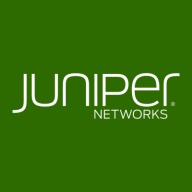

Fortinet FortiWLM and Juniper Mist compete in the network management space, with Fortinet having the upper hand in security integration, while Juniper stands out with its AI capabilities.
Features: Fortinet FortiWLM offers centralized management through FortiGate, robust security features including an integrated firewall, and seamless scalability and stability. Juniper Mist provides AI-driven network management, efficient problem resolution with Marvis, and comprehensive analytics to optimize network performance.
Room for Improvement: Fortinet FortiWLM could improve reporting, management features, and streamline setup procedures. There's also a need to enhance support for guest management and automation. Juniper Mist could enhance third-party integrations, refine AI features for interference management, and offer more flexible pricing to attract smaller businesses.
Ease of Deployment and Customer Service: Fortinet FortiWLM mainly offers on-premises deployment that may limit flexibility, though it provides dependable tech support. Juniper Mist has flexible deployment options including public, private, and hybrid clouds, but its support may require escalation for complex issues.
Pricing and ROI: Fortinet FortiWLM is cost-effective with significant ROI, though there's a call to reduce pricing for smaller enterprises. Juniper Mist is considered a premium product with high initial costs, yet offers good ROI. Its pricing strategy could be improved to make it more accessible to a broader market.
The local support we receive from our distributor is perfect.
Fortinet provides excellent customer support.
If we encounter any bugs, they inform us of the recommended configuration and firmware to resolve our problems.
My impression of Juniper support is generally good, and I would rate it probably a 9.
Technical support is very good.
Now, with any simple FortiGate 60F or newer model, you can manage more than 64 access points.
Fortinet's solutions are integrated into many standard frameworks, allowing for good scalability and interaction with other vendors' products.
The cloud, which operates on Amazon Web Services (AWS), can support unlimited access points.
It's built for larger environments.
This is a stable solution.
A mobile application to manage the Wi-Fi or the whole network would be beneficial.
Firmware upgrades and bug improvements need to be tested well.
One area that needs improvement is the configuration aspect, which is more challenging compared to other products.
Juniper products are still coming to market, HP offers its own access point range, which competes with Juniper's premium Mist access points intended for enterprise customers.
I suggest that the AI tool in the Juniper Mist Wireless Access Points needs to be a little bit more ChatGPT-like, allowing easier communication in normal language instead of requiring specific prompts.
The reporting logs require improvement in terms of clarity.
While the pricing of Fortinet FortiWLM is a bit high, it remains effective.
Fortinet's pricing is different from Aruba, as Aruba has solutions for small business and enterprise in different categories.
The price is competitive.
Regarding pricing, Juniper's cost rates as a seven on a scale where one represents a high price and ten represents a low price.
The price is very high, which is why not all enterprises can purchase this product.
Juniper Mist is cheaper than Meraki, placing it in the middle of the pack.
The most useful aspect of Fortinet FortiWLM is that you can manage all the Fortinet products from one portal, from one device.
The solution is controlled from one device and one GUI for all devices.
It also has integration capabilities with FortiFirewall which is beneficial for customers.
I have gained valuable insights from the Mist Cloud's analytics and network insights, as it tells you a lot of things, including details about Microsoft Teams calls, identifying which calls were good or bad, and correlating that to the client's signal and which access point the client was connected to at the time.
From my perspective, the Juniper reporting logs are clear and provide necessary data, which supports better management and diagnosis.
It's a cloud solution with Mist, which helps troubleshoot and provides visibility to look at different access points.
| Product | Market Share (%) |
|---|---|
| Juniper Mist Wireless Access Points | 5.6% |
| Fortinet FortiWLM | 1.9% |
| Other | 92.5% |


| Company Size | Count |
|---|---|
| Small Business | 19 |
| Midsize Enterprise | 3 |
| Large Enterprise | 5 |
| Company Size | Count |
|---|---|
| Small Business | 11 |
| Midsize Enterprise | 4 |
| Large Enterprise | 8 |
Consolidate security and wireless LAN management with our integrated wireless solutions. Single-pane-of-glass management for security and access without the need to add point products simplifies deployment and reduces management complexity. These solutions are highly scalable to support even the largest organizations and distributed enterprises.
Juniper Wireless Access Points work in conjunction with Juniper Mist Cloud Services and Mist AI to deliver premier wireless access capabilities. The Juniper Mist Edge extends microservices to the campus to bring agility and scale while enabling new applications at the edge.
We monitor all Wireless LAN reviews to prevent fraudulent reviews and keep review quality high. We do not post reviews by company employees or direct competitors. We validate each review for authenticity via cross-reference with LinkedIn, and personal follow-up with the reviewer when necessary.